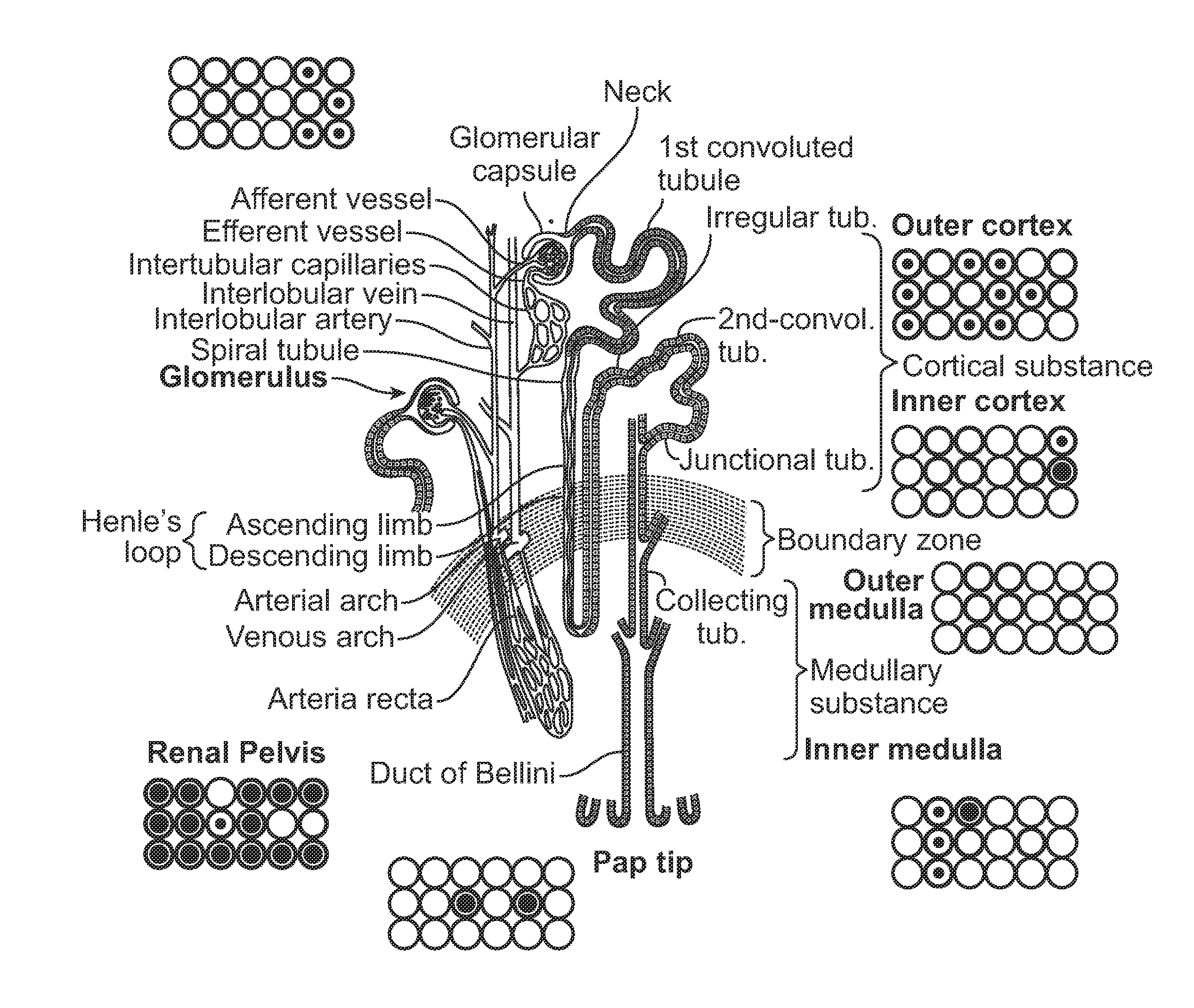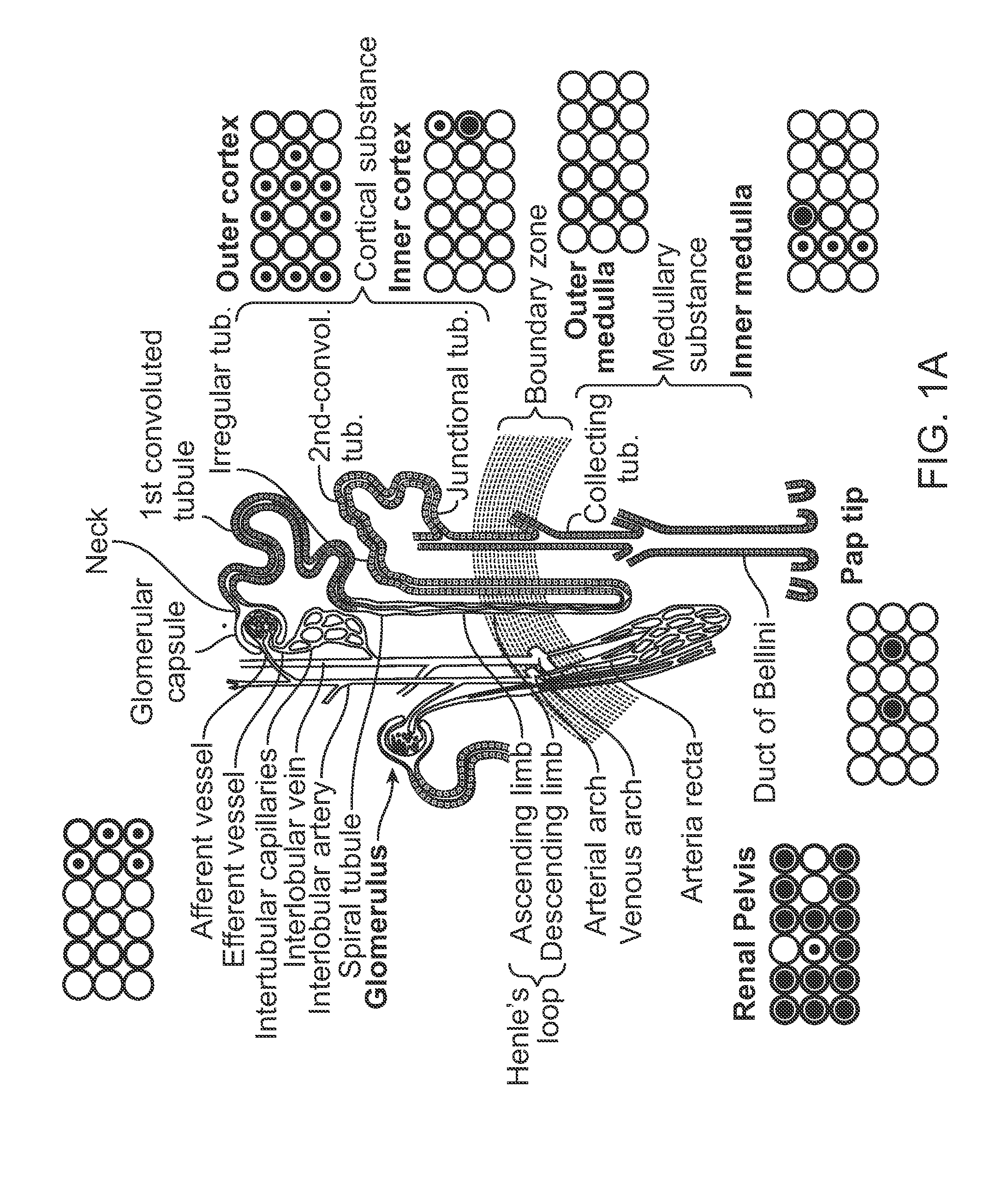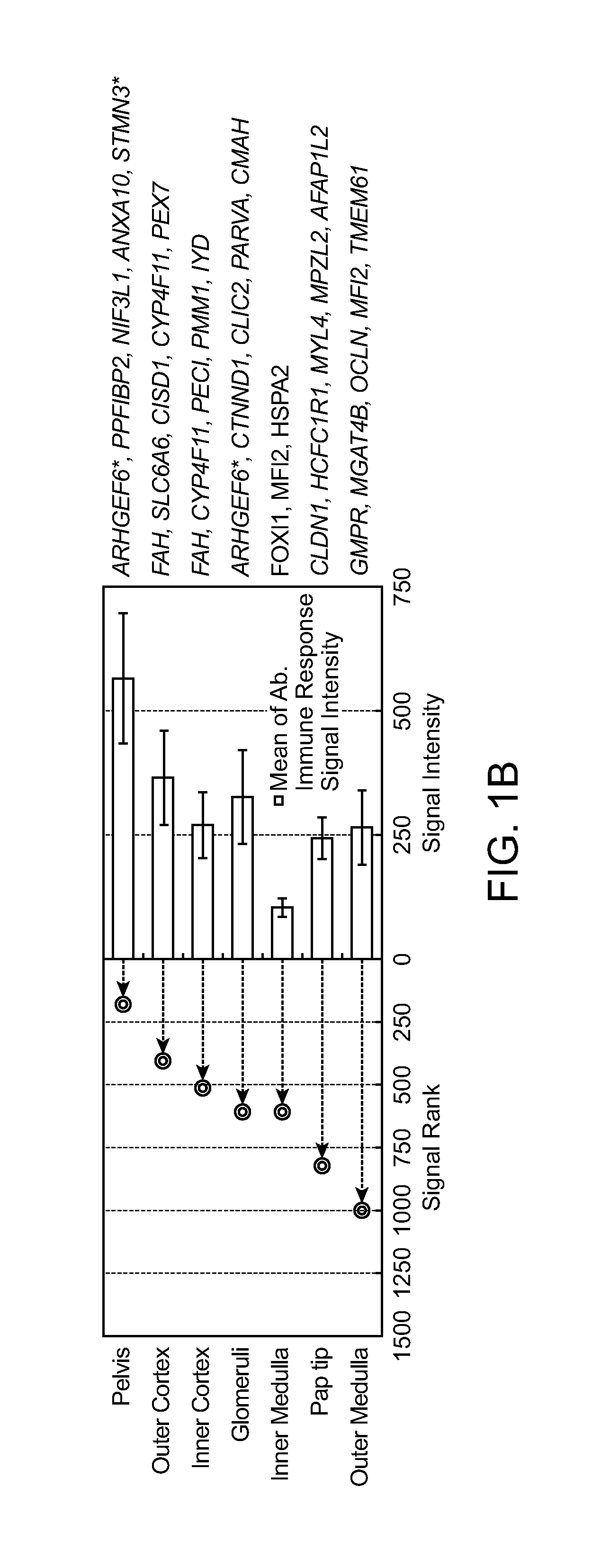Compartment-Specific Non-HLA Targets for Diagnosis and Prediction of Graft Outcome
a technology of hla non-abo and hla target, which is applied in the field of compartment-specific non-hla target for diagnosis and prediction of graft outcome, can solve the problems of reducing the incidence of acute rejection on graft life expectancy, difficult identification of these non-hla non-abo immune targets, and the inability to screen antibodies for specificity
- Summary
- Abstract
- Description
- Claims
- Application Information
AI Technical Summary
Benefits of technology
Problems solved by technology
Method used
Image
Examples
example 1
Kidney Compartment-Specific Alloimmune Non-HLA Targets can be Identified After Renal Transplantation
Abstract
[0082]We have conducted a novel integrative genomics analysis of serological responses to non-HLA targets after renal transplantation, with the aim of identifying the tissue specificity and types of immunogenic non-HLA antigenic targets after transplantation. Post-transplant antibody responses were measured by paired comparative analysis of pre- and post-transplant serum samples from eighteen pediatric renal transplant recipients, measured against 5,056 unique protein targets on the ProtoArray platform. The specificity of antibody responses were measured against gene expression levels specific to the kidney, as well as two other randomly selected organs (heart and pancreas), by an integrate genomics methodology, employing the mapping of transcription and protoarray platform measures using AILUN. Additionally, the likelihood of post-transplant non-HLA targets being recognized p...
example 2
Protein Microarrays Identify Antibodies to Protein Kinase Cc that are Associated with a Greater Risk of Allograft Loss in Pediatric Renal Transplant Recipients
[0121]Antibodies to human leukocyte antigens (HLAs) are a risk factor for acute renal allograft rejection and loss. The role of non-HLAs and their significance to allograft rejection have gained recent attention. Here, we applied protein microarray technology, with the capacity to simultaneously identify 5056 potential antigen targets, to assess non-HLA antibody formation in 15 pediatric renal transplant recipients during allograft rejection. Comparison of the pre- and post-transplant serum identified de novo antibodies to 229 non-HLA targets, 36 of which were present in multiple patients at allograft rejection. On the basis of its reactivity, protein kinase Cζ (PKCζ) was selected for confirmatory testing and clinical study. Immunohistochemical analysis found PKCζ both within the renal tissue and infiltrating lymphocytes at re...
PUM
| Property | Measurement | Unit |
|---|---|---|
| concentration | aaaaa | aaaaa |
| pore sizes | aaaaa | aaaaa |
| heterogeneity | aaaaa | aaaaa |
Abstract
Description
Claims
Application Information
 Login to View More
Login to View More - R&D
- Intellectual Property
- Life Sciences
- Materials
- Tech Scout
- Unparalleled Data Quality
- Higher Quality Content
- 60% Fewer Hallucinations
Browse by: Latest US Patents, China's latest patents, Technical Efficacy Thesaurus, Application Domain, Technology Topic, Popular Technical Reports.
© 2025 PatSnap. All rights reserved.Legal|Privacy policy|Modern Slavery Act Transparency Statement|Sitemap|About US| Contact US: help@patsnap.com



